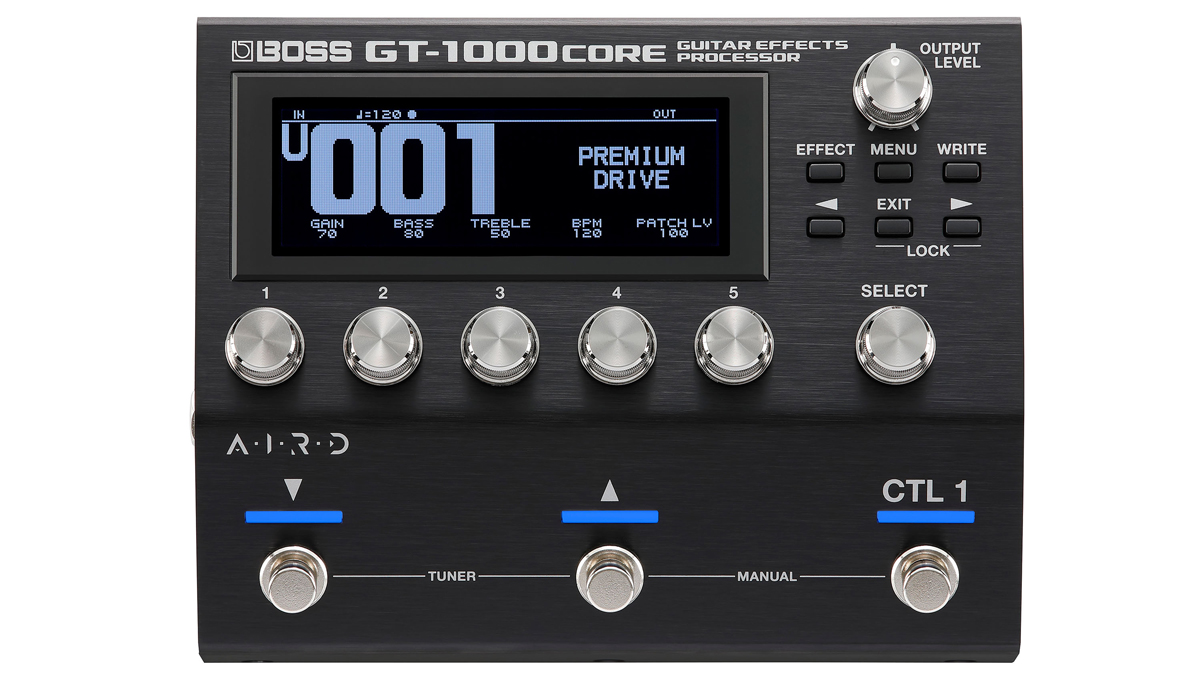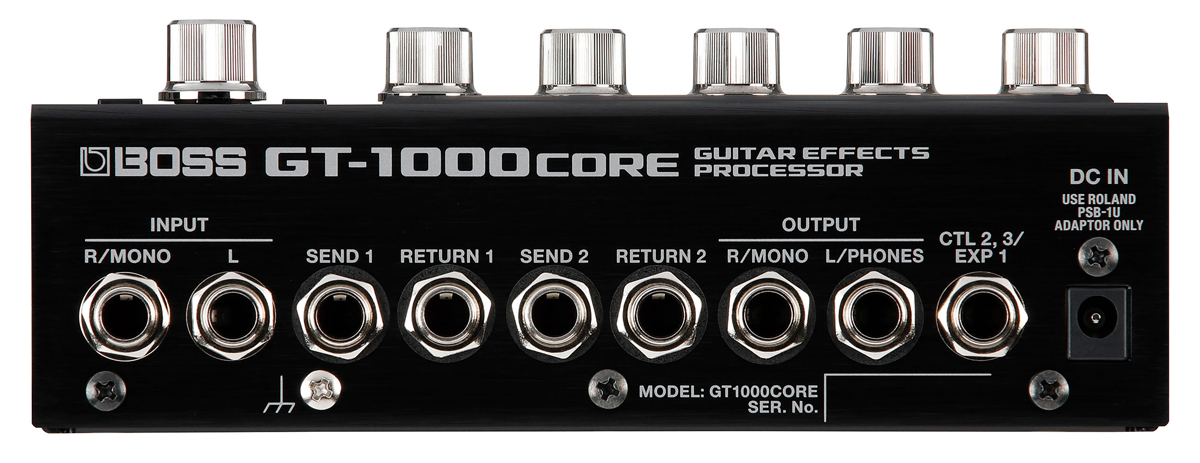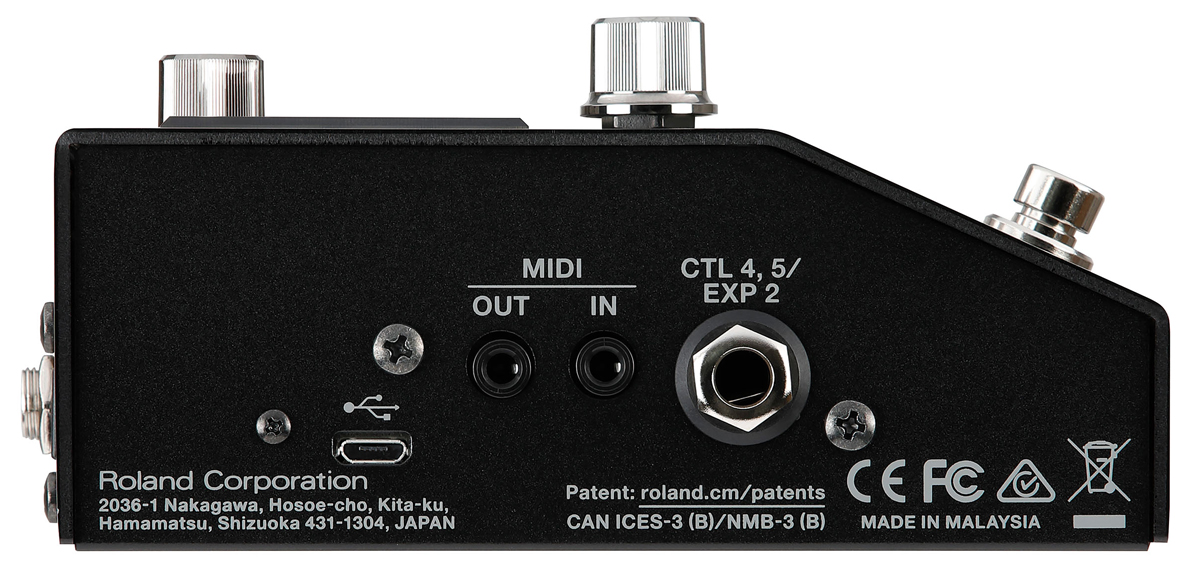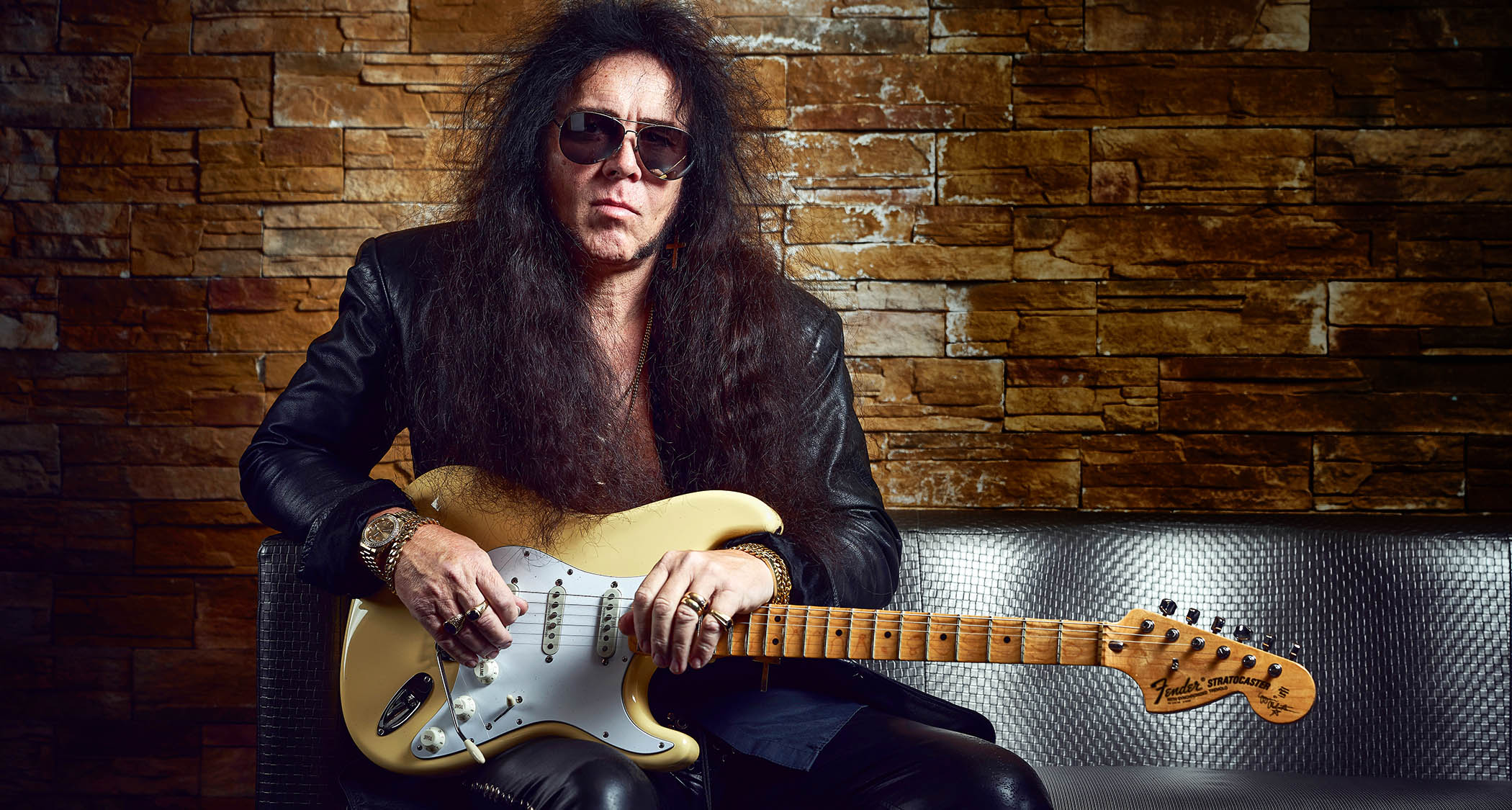Boss takes on Line 6’s HX Stomp with the pedalboard-friendly GT-1000CORE
With all the processing power of the flagship GT-1000, could this become the next compact multi-effects/amp modeler du jour?
In a move set to shake up the multi-effects market, Boss has announced the GT-1000CORE, a downsized version of the GT-1000, and a direct competitor to Line 6’s popular HX Stomp.
The GT-1000CORE packs all the processing power of Boss’s flagship multi-FX, but downsizes it into a triple-footswitched pedal the size of Boss’s 500 series, designed to fit into existing pedalboard setups.

That means Boss’s AIRD (Augmented Impulse Response Dynamics) engine is onboard for amp and effects modeling, while the company promises the DSP engine delivers on-demand power for all effects blocks, meaning there are no limitations on your signal chain. The Line 6 HX Stomp, in contrast, features a six-block limit on each preset.
A single patch on the GT-1000CORE can provide access to up to 24 simultaneous effects – including two amps at once – and sounds can be saved in any of the 250 user patches onboard.
Like the HX Stomp, the GT-1000CORE offers flexible footswitch operation and signal routing, with dual send/return jacks to incorporate external effects or the four-cable method with your amp’s effects loop.
The pedal can also be used to switch amp channels, while TRS MIDI I/O jacks integrate with other switching and MIDI devices.


Other functionality includes multi-channel USB audio for re-amping and integration with DAWs; onboard impulse responses and the option to add your own; an onboard looper; and the ability to craft sounds using the Boss Tone Studio editor for Mac/PC.
Get The Pick Newsletter
All the latest guitar news, interviews, lessons, reviews, deals and more, direct to your inbox!
With a huge array of amp models, and effects from Boss’s entire history of pedals, we could see many 500 series users upgrading to this more versatile unit.
The price for the GT-1000CORE comes in at $699/£599 – $100 more than the HX Stomp. For serious FX hounds, that extra processing power could be worth the extra dollar, although it remains to be seen whether the interface can compete with Line 6’s user-friendly, color-coded operation.
For more info, head over to Boss.

Mike is Editor-in-Chief of GuitarWorld.com, in addition to being an offset fiend and recovering pedal addict. He has a master's degree in journalism from Cardiff University, and over a decade's experience writing and editing for guitar publications including MusicRadar, Total Guitar and Guitarist, as well as 20 years of recording and live experience in original and function bands. During his career, he has interviewed the likes of John Frusciante, Chris Cornell, Tom Morello, Matt Bellamy, Kirk Hammett, Jerry Cantrell, Joe Satriani, Tom DeLonge, Ed O'Brien, Polyphia, Tosin Abasi, Yvette Young and many more. In his free time, you'll find him making progressive instrumental rock under the nom de plume Maebe.
“An all-in-one power solution, on or off the grid”: D’Addario’s rechargeable XPND Pedal Power promises to make your ’board more portable – but only if you daisy chain
“Our new power supplies are about as state-of-the-art as you can get”: How Truetone’s game-changing 1 Spot Pro series is continuing to provide pro pedalboard power to the masses with the new CS11 and XP5










